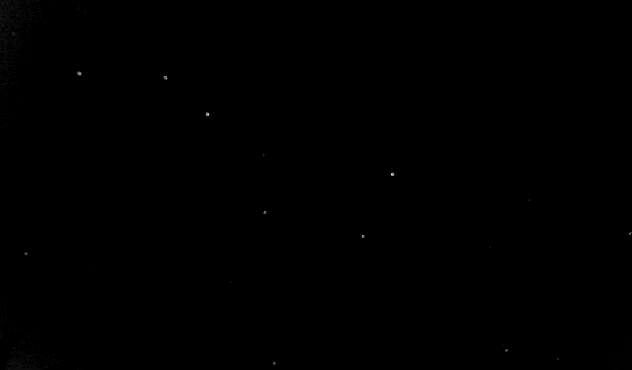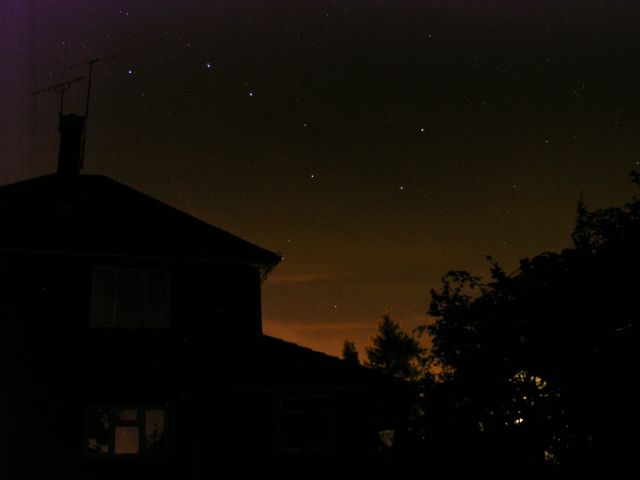

 The goddess of the hunt, Artemis, had a favourite nymph called Kallisto who was raped by Zeus. When she gave birth to a son, Arkas, Hera (wife of Zeus) was so angry she punished Kallisto mercilessly and finally transformed her into a bear. In this form Kallisto wandered alone fearful of both man and beast. Meanwhile Arkas grew up knowing nothing of his mother and became a hunter. One day Kallisto met him in the woods and, recognising her son, she approached him. Arkas, fearing the approach of this great bear who stared at him so fixedly, drew his spear preparing to strike. At this point Zeus finally had pity and swept mother and son into the sky and immortalised them in the stars. Kallisto became the Great Bear and Arkas became the star Arktouros (Arcturus) for ever following his mother through the sky. This made Hera even more angry and she persuaded the sea-gods, Ocean and Tethys, never to allow Kallisto and Arkas to sink to rest in the ocean that surrounds the Earth, which is why Ursa Major and Arcturus never set. Why celestial bears have tails when terrestrial ones do not is not clear. Perhaps few ancient Greeks had ever seen a real bear.
The goddess of the hunt, Artemis, had a favourite nymph called Kallisto who was raped by Zeus. When she gave birth to a son, Arkas, Hera (wife of Zeus) was so angry she punished Kallisto mercilessly and finally transformed her into a bear. In this form Kallisto wandered alone fearful of both man and beast. Meanwhile Arkas grew up knowing nothing of his mother and became a hunter. One day Kallisto met him in the woods and, recognising her son, she approached him. Arkas, fearing the approach of this great bear who stared at him so fixedly, drew his spear preparing to strike. At this point Zeus finally had pity and swept mother and son into the sky and immortalised them in the stars. Kallisto became the Great Bear and Arkas became the star Arktouros (Arcturus) for ever following his mother through the sky. This made Hera even more angry and she persuaded the sea-gods, Ocean and Tethys, never to allow Kallisto and Arkas to sink to rest in the ocean that surrounds the Earth, which is why Ursa Major and Arcturus never set. Why celestial bears have tails when terrestrial ones do not is not clear. Perhaps few ancient Greeks had ever seen a real bear.
 In the picture, Cor Caroli is not part of Ursa Major but the principal star in a small constellation, Canes Venatici, the hunting dogs, no doubt harrying the bear for eternity. Cor Caroli is a nice double star. The most notable multiple star in Ursa Major is Mizar. There are eight Messier objects in the constellation, M40 (a double star), M81 (a spiral galaxy), M82 (an irregular galaxy interacting with M81), M97 (a planetary nebula), M101 (a face-on, spiral galaxy), M106 (a Seyfert galaxy), M108 (a spiral galaxy seen edge on), and M109 (a barred spiral galaxy).
In the picture, Cor Caroli is not part of Ursa Major but the principal star in a small constellation, Canes Venatici, the hunting dogs, no doubt harrying the bear for eternity. Cor Caroli is a nice double star. The most notable multiple star in Ursa Major is Mizar. There are eight Messier objects in the constellation, M40 (a double star), M81 (a spiral galaxy), M82 (an irregular galaxy interacting with M81), M97 (a planetary nebula), M101 (a face-on, spiral galaxy), M106 (a Seyfert galaxy), M108 (a spiral galaxy seen edge on), and M109 (a barred spiral galaxy).
The picture was taken with an Olympus C-5050 camera with 16 seconds exposure at f/2.6 and ISO 400 at 21:13 UT on 26 January 2009. It has been enhanced by increasing the gamma to 1.5 and the contrast increased to darken the background, and some colour caused by light pollution removed.
 Here the great bear is setting over my house. Actually of course it never sets from my latitude but the picture is looking north-west and was taken at 20:40 UT which is 2 hours and 10 minutes after sunset. The Sun was 19½° below the horizon and almost exactly beneath Alkaid (the left-most star) and I feel that that is too far below the horizon for it to be lighting the clouds. However this direction is very rural and there are few lights other than the sodium street lights in the immediate vacinity so I assume it is these that are lighting up the clouds.
Here the great bear is setting over my house. Actually of course it never sets from my latitude but the picture is looking north-west and was taken at 20:40 UT which is 2 hours and 10 minutes after sunset. The Sun was 19½° below the horizon and almost exactly beneath Alkaid (the left-most star) and I feel that that is too far below the horizon for it to be lighting the clouds. However this direction is very rural and there are few lights other than the sodium street lights in the immediate vacinity so I assume it is these that are lighting up the clouds.
It was taken with an Olympus C-5050 camera with 16 seconds exposure at f/2.6 and ISO 400 at 20:40 UT on 10 September 2009.